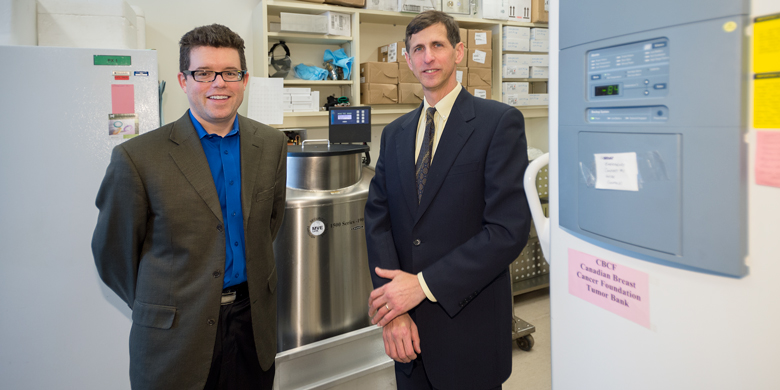Researchers from the University of Alberta and Alberta Health Services have developed a machine learning classifier algorithm that successfully predicts whether estrogen is sending signals to cancer cells to grow into tumors in the breast. By finding this hormone receptor, known as estrogen receptor positive, physicians can prescribe anti-estrogen drug therapies, improving patient outcomes.
Since each cell in the body contains 23,000 genes, identifying the specific genes involved in cancer growth is an exceedingly complex task. Researchers used unsupervised machine learning techniques to identify three genes that allowed them to determine whether a tumor was fed by estrogen.
People can’t possibly sort through all this information and find the important patterns,” said senior author Russ Greiner, a professor in the Department of Computing Science and investigator with the Alberta Innovates Centre for Machine Learning. “Machines have other limitations, but what they can do is go through high-dimensional data. With our techniques, we can find combinations of biomarkers that can predict important properties of specific breast cancers.”
Greiner’s team created an algorithm that proved 93 per cent accurate in predicting the estrogen receptor status of tumors. To do this, they relied on data gathered from 176 frozen tumor samples stored at the Canadian Breast Cancer Foundation Tumor Bank at the Cross Cancer Institute in Edmonton.
After the algorithm was trained on the training set, it was then run on other test sets to verify the predicting power of the algorithm. The other data sets were available online, and yielded similar success. The results were cross-checked with existing tests done by pathologists using traditional estrogen-receptor testing.
It’s still premature to consider the algorithm as a replacement for traditional lab tests, but that could change as new technologies become more affordable, perhaps in five to eight years.
The research team also included John Mackey, Meysam Bastani, Larissa Vos, Nasimeh Asgarian, Jean Deschenes and Kathryn Graham. Their findings were published Dec. 2 in the peer-reviewed journal PLOS ONE.





Speak Your Mind